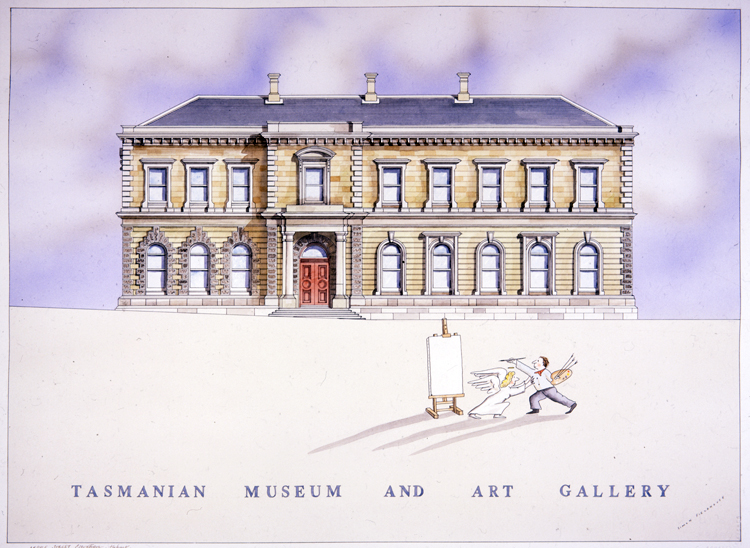
Tasmanian Museum and Art Gallery
Title: The Architecture and Cultural Significance of the Tasmanian Museum and Art Gallery
Introduction
The Tasmanian Museum and Art Gallery (TMAG), located in Hobart, Tasmania, stands as a testament to the harmonious fusion of history and modernity, art and culture. Its architectural design and cultural significance reflect the island's rich heritage, fostering a deep sense of connection between its visitors and the unique environment of Tasmania.
Architectural Grandeur
The TMAG, originally established in 1843, is a treasure trove of Tasmania's past, present, and future. Its architectural design mirrors this diverse cultural heritage. In 2013, a major expansion project was completed, which included a striking new wing designed by the renowned Australian architecture firm Fender Katsalidis. This modern extension boldly juxtaposes the historic Bond Store, which dates back to the 1820s. The design weaves together the old and new, preserving the historical significance of the site while creating a contemporary space for art and culture.
The modern wing, with its sleek lines and large glass windows, provides a stark contrast to the rustic sandstone facade of the Bond Store. The use of materials, such as Tasmanian wood, pays homage to the local environment and adds warmth to the space. The thoughtful design allows natural light to permeate the galleries, creating a visually engaging experience. Visitors are invited to explore Tasmania's art, history, and culture in an environment that is both immersive and inspiring.
Cultural Significance
TMAG plays a crucial role in preserving and celebrating Tasmania's rich cultural heritage. The museum's diverse collections span from indigenous artifacts to contemporary art, reflecting the multifaceted history of the island. The "First Tasmanians" gallery, for example, provides valuable insights into the culture and traditions of Tasmania's Aboriginal people, the Palawa. The collection showcases their art, tools, and stories, bridging the gap between the past and the present.
Additionally, TMAG is instrumental in promoting contemporary Tasmanian artists, fostering creativity and innovation in the region. The modern wing serves as a platform for local artists to exhibit their work, attracting both national and international attention. The museum's commitment to showcasing contemporary art ensures that Tasmania's artistic talents receive the recognition they deserve.
Furthermore, TMAG hosts various temporary exhibitions and cultural events, making it a dynamic hub for cultural exchange. Whether it's an exhibition on Tasmania's maritime history or a showcase of cutting-edge contemporary art, the museum plays a vital role in connecting Tasmanians and visitors alike with the island's unique culture.
Conclusion
The Tasmanian Museum and Art Gallery stands as an architectural and cultural landmark in Tasmania. Its blend of historical preservation and contemporary design serves as a testament to Tasmania's rich heritage. The museum's cultural significance extends beyond its architectural beauty, as it plays a crucial role in educating, inspiring, and connecting the community with the island's past and present. TMAG is a symbol of Tasmania's commitment to cultural preservation and artistic innovation, making it an essential institution for both locals and tourists who seek to explore the heart and soul of the island.